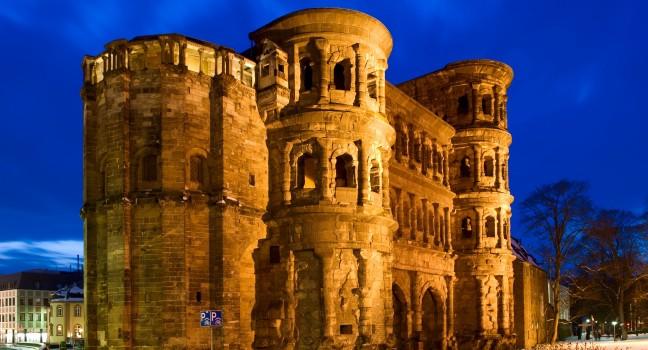The oldest Christian church north of the Alps, the Dom stands on the site of the Palace of Helen. Constantine tore the palace down in AD 330 and put up a large church in its place. The church burned down in 336, and a second, even larger one was built. Parts of the foundations of this third building can be seen in the east end of the present structure (begun in about 1035). The cathedral you see today is a weighty and sturdy edifice with small round-head windows, rough stonework, and asymmetrical towers, as much a fortress as a church. Inside, Gothic styles predominate—the result of remodeling in the 13th century—although there are also many baroque tombs, altars, and confessionals. The highlight of the Schatzkammer (Cathedral Treasury) is the 10th-century Andreas Tragaltar (St. Andrew's Portable Altar), constructed of oak and covered with gold leaf, enamel, and ivory by local craftsmen. It's a reliquary for the soles of St. Andrew's sandals, as signaled by the gilded, life-size foot on the top of the altar. You can also visit the Cathedral Museum, which has a separate entrance just behind the cathedral.




